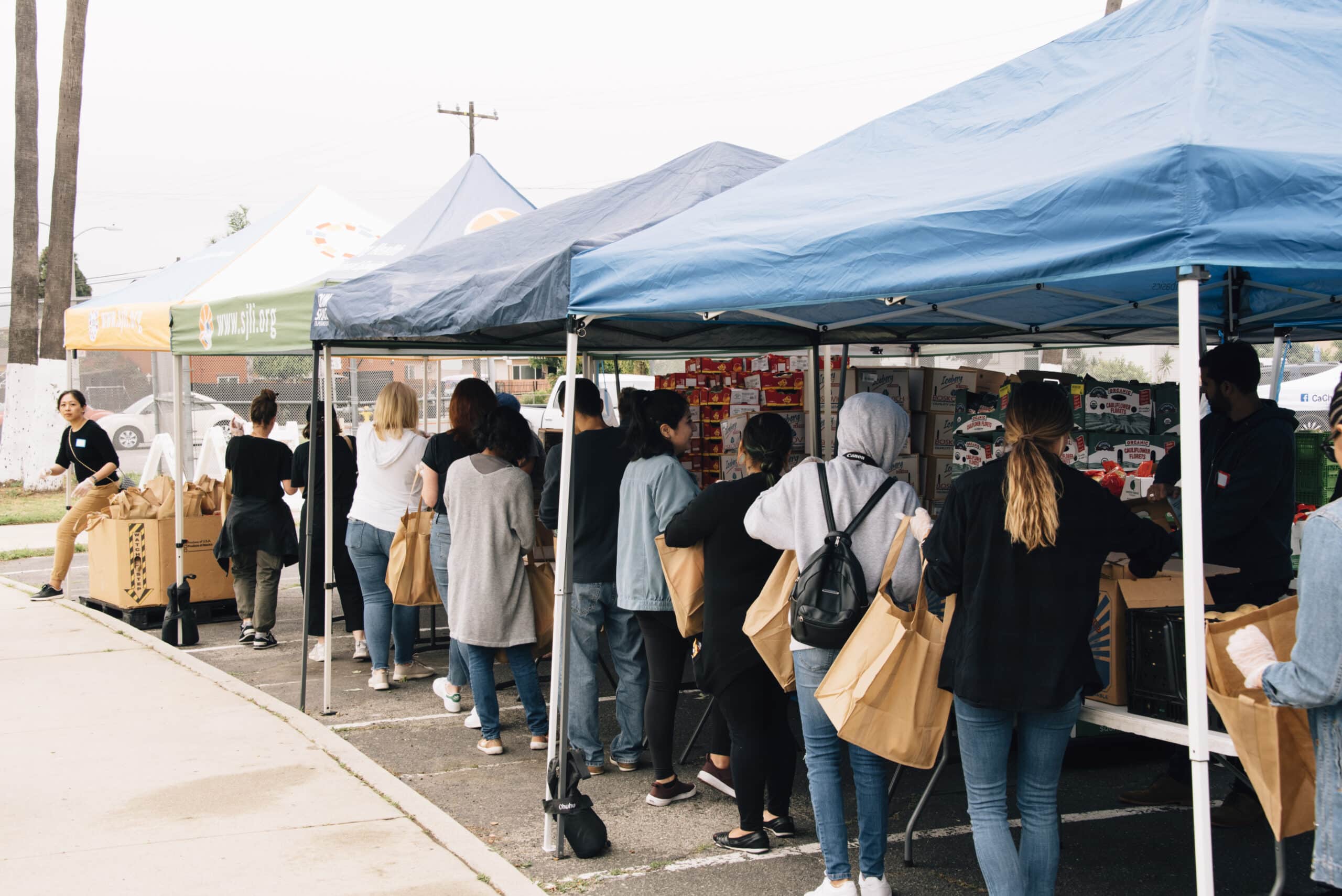“Food insecurity,” “food security,” and “hunger,” are often used interchangeably since they are all connected to food access and its effects on health, but each has clear distinctions and it is important that these terms guide our efforts to address the issues behind food access.
What is food insecurity?
The USDA defines food insecurity as a lack of consistent and equitable access to healthy, safe, and affordable foods that promote optimal health and well-being. Inadequate access to healthy food results in long and short-term health and nutritional hardship and negatively affects one’s overall quality of life.
Food Forward’s plant-based business model focuses on the health impacts of food insecurity. This is because of the connection between diet and health and the positive impact that fruits and vegetables can have on people’s overall health including lower risk of chronic diseases such as cardiovascular disease, obesity, diabetes, and some cancers.
What is food security?
Food security is the opposite of food insecurity. We define it as reliable access to healthy food that results in positive long and short-term health and nutritional outcomes.
Food Forward’s work goes beyond striving for an absence of food insecurity and food justice where all individuals and communities, across all social, racial, and economic lines have equitable access and participation in the growing, selling, buying and consuming of fresh nutritious food.
One of the ways we do this is by partnering with hundreds of hunger relief organizations that provide fresh fruits and vegetables to people experiencing food insecurity. These organizations work closely with communities affected by food insecurity to address both its causes and effects. By distributing fresh fruits and vegetables in tandem with services like housing, healthcare, education, and more, our partners serve their communities with a multi-pronged approach catered to people’s specific needs.
Is there a difference between food insecurity and hunger?
Yes. The two terms point to similar issues and solutions, but are not the same. Food insecurity refers to a socioeconomic issue, and hunger refers to a physical, bodily one. Food insecurity is measured at a household level and hunger is measured at an individual level.
Addressing food insecurity
Food Forward addresses food insecurity by providing consistent access to healthy food in communities experiencing it. We know that it isn’t an isolated phenomenon, and that addressing related issues can lessen the impact of food insecurity and build healthier and happier communities.
That’s why our food rescue efforts look to address the climate impact of food waste, reducing carbon emissions by diverting produce from landfills for a healthier environment to live in. And by sharing produce with our hunger relief agency partners 100% free of charge, they can continue to provide a variety of services and programs to their communities, without an extra cost added to their budget.
As we move forward, we continue to strategize our efforts by prioritizing partnerships with communities experiencing high rates of chronic food insecurity. We look at our gaps in service and prioritize closing them, supplying fresh produce to those hit the hardest by the causes and effects of food insecurity.

